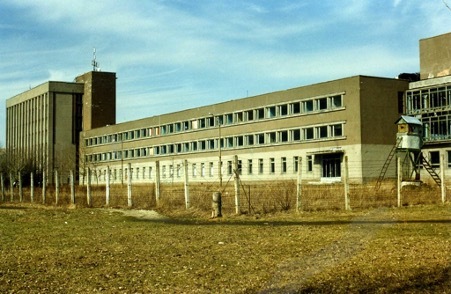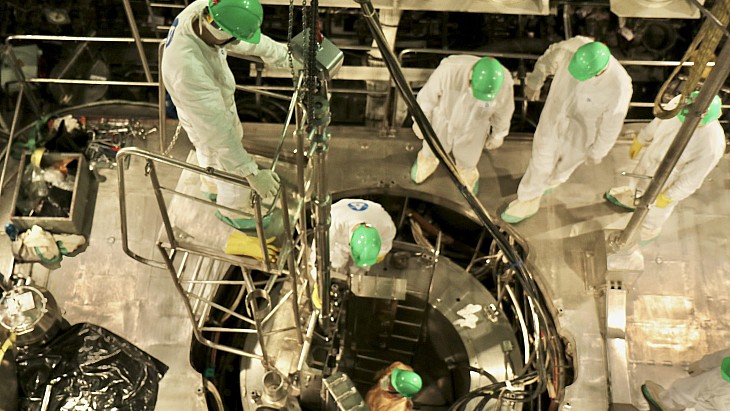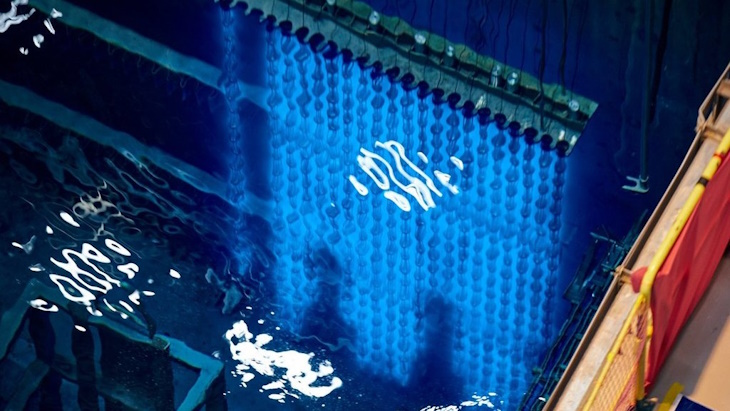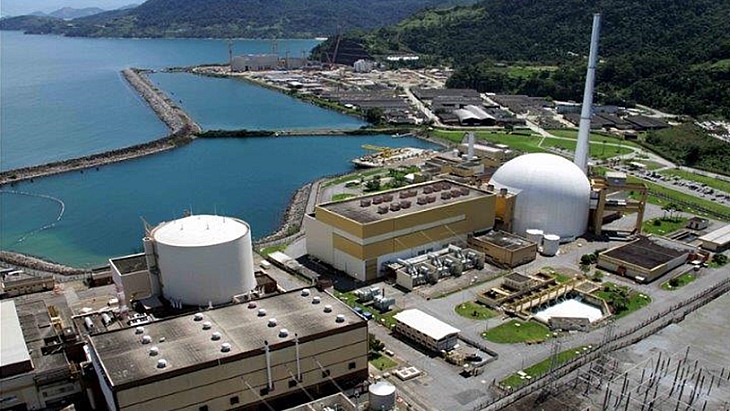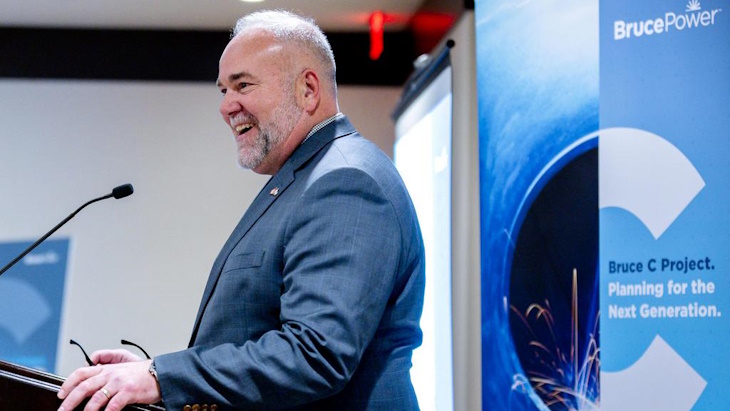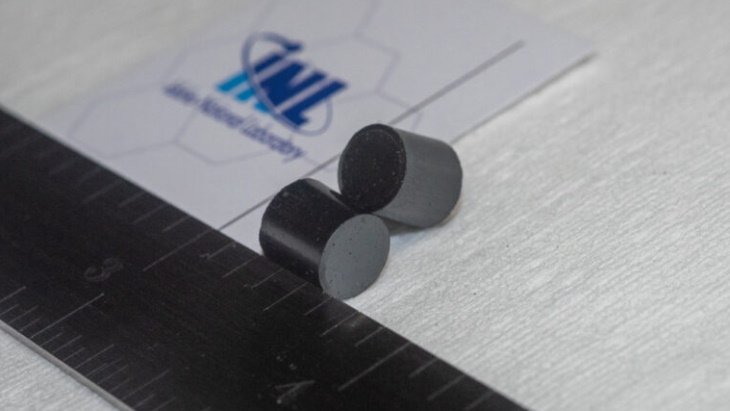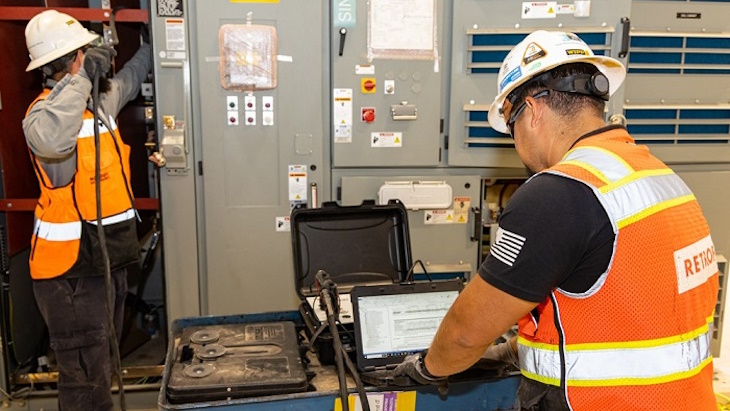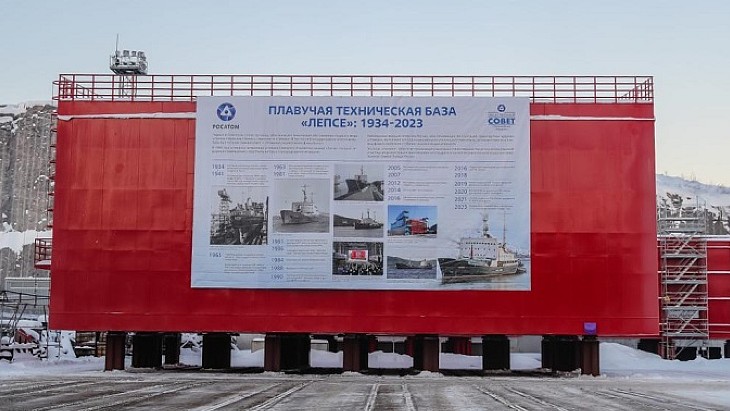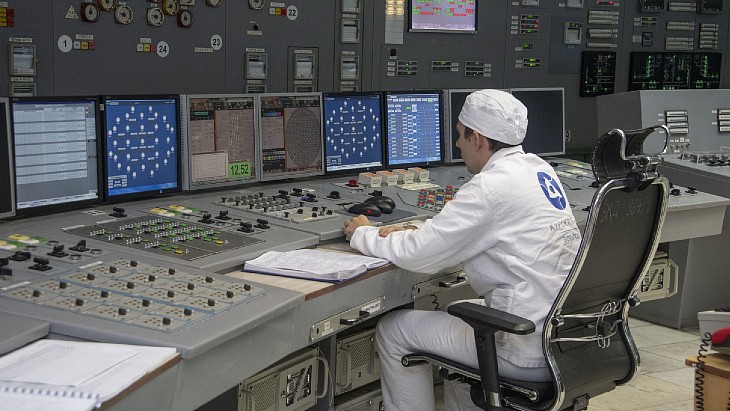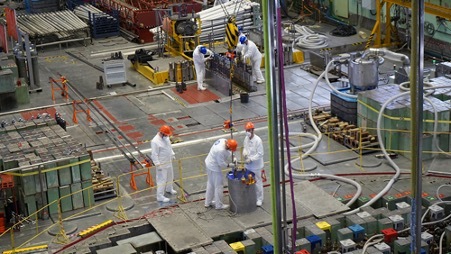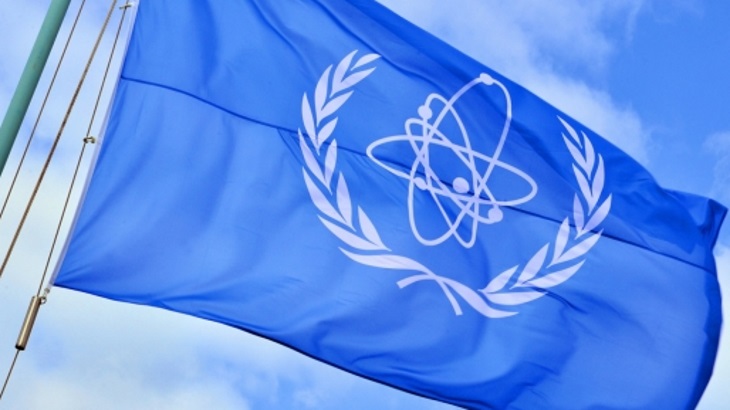Recent studies have found that a decommissioned Soviet-era training reactor at Estonia’s port city of Paldiski contains sources of radioactivity but no nuclear fuel, according to ETV news programme Aktuaalne kaamera (AK). The reactor was one of two installed at a land-based nuclear submarine training facility for the Soviet Navy. These results were determined using fluoroscopy. The company responsible for the work, GScan, uses its own patented technology to detect naturally occurring muon radiation. Andres Nurme, project manager at GScan, said: “These are cobalt-60 radiation sources. Based on the ongoing work and its results, we can say with certainty that there is no longer any nuclear fuel in the reactors.” Most of the heaviest radiation sources are located at or near the top of the reactor lid, the investigation found.
AS ALARA is tasked with the final demolition of the Paldiski reactors. Alari Kruusvall, AS ALARA’s environmental engineering specialist, told AK that the complex will be completely demolished, starting with the recently examined reactor and layer by layer from top to bottom. Recent mapping of radiation sources ensures that these sources are not disturbed in the destruction process.
Paldiski became a Soviet Navy nuclear submarine training centre in 1962, with the construction of a facility known locally as “Pentagon”, which was decommissioned in 1994 and demolished in 2007. At its peak, Pentagon employed around 16,000 people at the two pressurised water reactors (PWRs) . Reactor 1 was a PWR/VM-A-type reactor with a thermal output of 70 MW commissioned in April 1968 and used until January 1989. It was emplaced in a metal housing similar in shape and dimensions to a nuclear submarine. The reactor was refuelled in 1980, and its total operating time (at 20-40% load) was 20,821 hours (13,781 hours with original fuel and 7,040 hours after refuelling).
Reactor 2 was a PWR/BM-4 (LWR)-type reactor with thermal output of 90 MW. Commissioned in February 1983 and was used until December 1989 at a load of approximately 30% without refuelling. The total operating time of the reactor was 5,333 hours. The decision to safely shut down the training centre on the Paldiski site was made in 1991, after recognition of Estonia’s independence by Russia.
Until 1995, Russian authorities undertook a number of works to ensure long-term safety of the reactor compartments:
- defuelling of the reactors and transportation of the fuel to Russia;
- disassembly of auxiliary compartments;
- removal of non-radioactive equipment;
- draining of liquids from the primary circuits and sealing of the reactors;
- draining of cooling water purification filters;
- removal of non-radioactive equipment located above the biological protective layer (water jacket around the reactor for capturing of neutrons);
- reinforcement of the support structures of the reactor compartments;
- construction of reinforced concrete sarcophagi and grouting of various radioactive units and accesses inside the reactor compartments.
The training centre together with the training reactors and the nuclear waste storage facility building was transferred to the ownership of Estonia in 1995. From 1995 to 2011, extensive conservation, cleaning and reconstruction works were carried out at the Paldiski site. Among other things, various buildings were cleaned and demolished and an interim storage facility for radioactive waste was installed in the main building. As a result of a 1999-2001 European Union (EU) project, the Evaluation of Management Routes for the Paldiski Sarcophagi, the project expert committee found that from the point of view of radiation safety and waste storage, it would be expedient to begin final decommissioning (decontamination and full dismantling) of the reactor compartments after 50 years of storage - around 2040.
In the course of a 2005-2008 EU PHARE project, the Safe Long-term Storage of the Paldiski Sarcophagi & Related Dismantling Activities, storage conditions were improved by installing an air-drying system in the sarcophagi for the purpose of increasing corrosion resistance, a monitoring system was installed on the reactor compartments for the purpose of detecting possible spills and the main building surrounding the reactors was renovated, making it more weather-proof.
The decision of the expert committee for the Evaluation of Management Routes for the Paldiski Sarcophagi project was based on the assumption that the radioactive waste generated during decommissioning of the reactor compartments starting in 2040 would be deposited in a radioactive waste repository established by that time at the latest. The interim storage facility established in 1997 has been designed to accommodate all radioactive waste generated in Estonia (including the radioactive waste generated in the course of decommissioning of the nuclear submarine crew training centre at Paldiski and the waste removed from the Tammiku radioactive waste storage facility), except for the waste generated in the decommissioning of the reactor compartments.
In 2015, AS ALARA and UAB EKSORTUS were contracted to undertake preliminary studies for the decommissioning of the reactor compartments of the former Paldiski military nuclear site and for the establishment of a radioactive waste repository.
Their 87-page report concluded that:
- Construction of a repository in Estonia and disposal of radioactive waste was a feasible solution and the only sustainable option.
- Storage of decommissioning waste in the Paldiski interim storage was not a safe solution and its renovation or construction of a new interim storage was only a temporary solution.
- An authority responsible for RW management and disposal in Estonia should be clearly defined to ensure internationally accepted long-term safety of radioactive waste.
- There was no used fuel of high-level waste (HLW) present in Estonia.
- Taking into account waste streams related to possible future NPP, it was assumed that any nuclear fuel would be leased and returned to the producer and any HLW would be stored in an interim storage for decay until it could be classified as low or intermediate waste.
- The most active reactor components and current long-lived waste must be disposed of at least 30 meters below ground surface.
- A combination of underground disposal modules with disposal vaults built on the ground was the most appropriate disposal solution.
- The territory adjoining the Paldiski navy centre is regarded as a potential site for construction of a waste disposal facility.
- At the current stage the waste disposal process can be defined at conceptual level only because of lack of reliable data on characteristics of the waste to be disposed of.
- Appropriate waste characterisation should be the key element of a waste management system.
- Interdependence of various waste management steps should be considered within the radioactive waste management strategy.
- Regional disposal options would not be available within the next 50 years.
